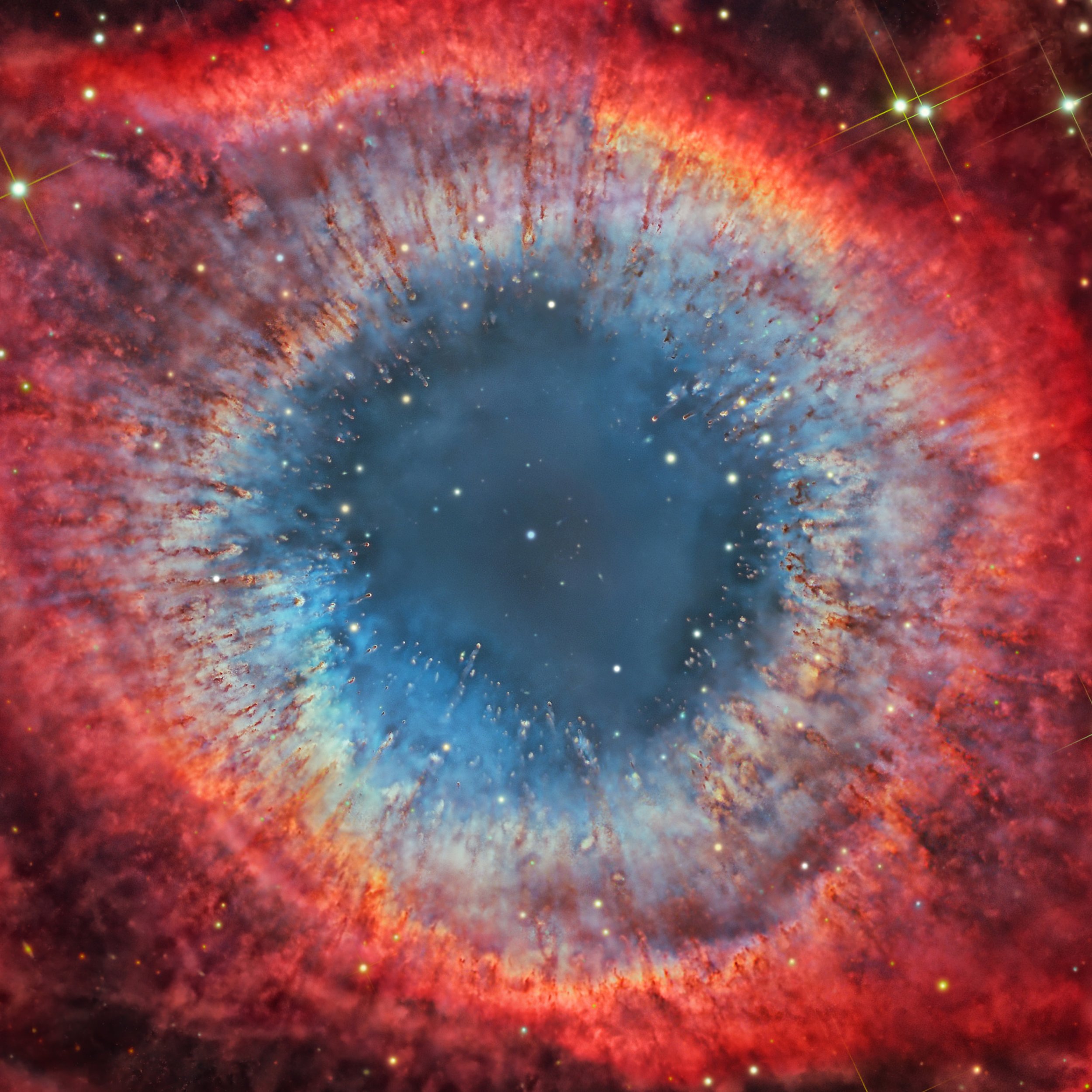Helix Nebula - NGC 7293
As it goes, I can never get enough of this wonderful object. Here in all its glory is our first image with our new Moravian C5 camera and our 24”CDK. Taken from SWOS in El Sauce, Chile. PlaneWave CDK24, Moravian C5, L600. LRGB-HA-O3-S2. Also added LRGB from STX-16803
Image Processing: Mark Hanson
Image Data and Calibration: Mark Hanson
Enjoy, Mark
“Beauty of Death”
In the final stages of a star’s life, the comet-like columns of dust and debris seen in the core of NGC 7293were formed when the hot stellar winds and radiation expanded out into the colder shells of gas and dust.
This description by Viewspace:
Some stars die slowly, giving off puffs of gas and dust known as planetary nebulas to reveal small white dwarfs. Much larger stars die suddenly in powerful explosions known as supernovas, blasting gas, dust, and energy out in all directions as they collapse to form tiny neutron stars or black holes. The gas and dust expelled by dying stars eventually combines with the remains of others to form new stars, planets, and moons.
As the dying star at the center of the Helix Nebula exhausted its fuel, it threw off its outer layers as a gaseous wind and transformed into a white dwarf. As the glowing shells of gas expand over 10,000 years, they eventually thin out and become part of the interstellar medium. Planetary nebulas provide a snapshot of a transitional phase in the life and death of a star.
Below are the HA and O3 processed stacks.
Image Below from CDK 1000
Taken from SWOS in El Sauce, Chile CDK 24 Hanson CDK 1000 Selby
From Selby and Hanson
Crop of core
Below are older and different versions
Taken with Planewave Delta Rho 300, Core from CDK 1000 Selby-Hanson
Full Field of Delta Rho 300 with CDK 1000 Insert for core Selby-Hanson
Inverted with color core Selby-Hanson
24” PlaneWave CDK (7 filter set)










